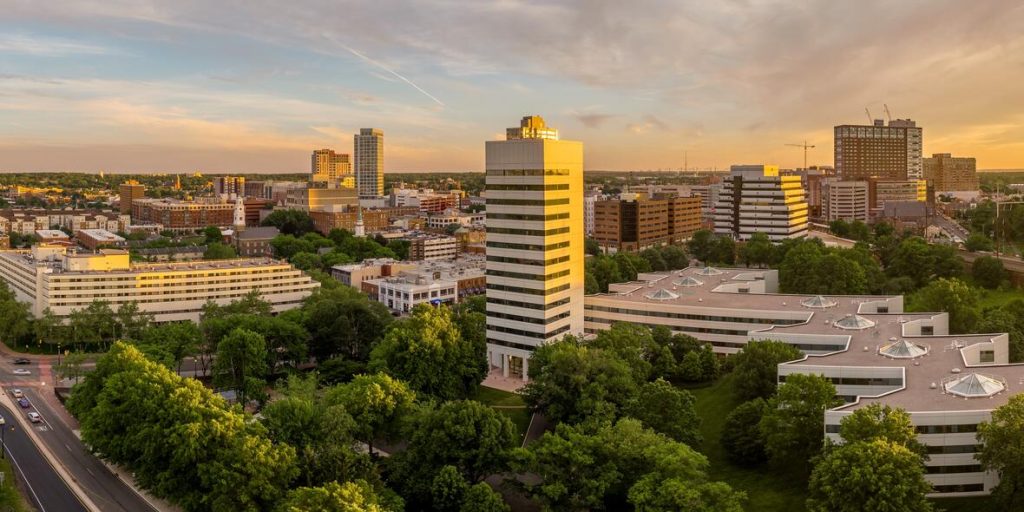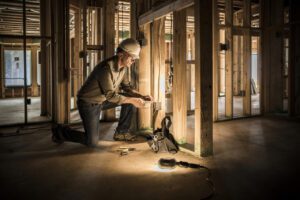
Microgrids are a key player in the new energy landscape, offering unmatched energy demand flexibility for commercial buildings and community needs. They provide owners with operational benefits while simultaneously helping local utilities manage fluctuating energy needs. Microgrids promote a sustainable energy future by enabling demand-side flexibility and incorporating clean energy sources (e.g., solar, wind) while solving for resilience and increasing electrification needs.
Traditional grids deliver electricity in one direction, from large, centralized power plants to end customers. As more consumers become energy prosumers–generating and using power–demand becomes more variable and complex.
Energy infrastructure needs to become more flexible to match demand with supply and support the integration of renewables.
Energy flexibility is possible for both supply and demand sides. While more investments have been made on the supply side for more flexible grid-owned assets and systems, demand-side flexibility from behind a building’s meter offers a more distributed and future-focused approach.
Be sure to read my colleague’s post, which discusses using the building and grid connection to drive decarbonization and cost-saving opportunities.
Microgrids impact demand-side flexibility
Microgrids are critical in increasing demand-side flexibility via several demand control methods and deliver intrinsic benefits to the commercial or industrial site where they are installed on day one. When they are interconnected with the utility, they can benefit the commercial customers, the grid, and the surrounding community. This integration benefits a wide range of stakeholders to improve stability, investment opportunities, and capacity management.
Flexible capacity
Microgrids provide local, decentralized renewables and storage, with the ability to supply excess energy to the grid when needed. On the one hand, commercial building owners who invest can:
- Increase energy demand flexibility
- Choose which resources to use at any time
- Stabilize their energy costs by switching to local sources when generating and storing power on-site
- Participate in demand-response programs when utility demand and rates are highest
- Increase an enterprise’s resilience against utility grid failures with islanding capabilities
On the other hand, for grid operators, the total capacity of multiple decentralized microgrids, like a Virtual Power Plant (VPP), can add capacity during peak demand, reducing the need for power peaker plants. Local utilities can tap into this flexible behind-the-meter capacity by allowing microgrids to respond to current market signals. This helps create a more reliable and sustainable electricity infrastructure.
Improvements and investment options
We’re observing how grid operators invest heavily to modernize aging grids and accommodate renewables and new loads like electric vehicles (EVs). Traditional grid improvements are costly and time-consuming. Microgrids can be part of a multifaceted solution for more flexibility, allowing grid operators to potentially postpone larger CapEx projects. And, with various business models, such as Energy as a Service (Eaas), which require no upfront CapEx, they can be even more attractive. This adds to microgrids’ value in addressing local power issues behind the meter.
How is this flexibility accomplished?
An ecosystem of intelligent platforms that aggregate, forecast, and optimize is essential for microgrids to aid demand-side flexibility.
- An energy management system dynamically controls on-site loads and resources, including microgrids, battery storage, and DERs, to optimize a facility’s performance.
- Energy supply management software provides insight into electrical system health, maximizing uptime and efficiency. The seamless integration between microgrids and the larger grid enables operators to tap into VPPs for demand response or frequency regulation.
- Advanced DERMS help ensure the grid’s reliability, stability, safety, and efficiency in the presence of DERs
Customer Spotlight | Montgomery County, Maryland
When extreme weather disrupted power for days in Montgomery County, Maryland, civic leaders sought to strengthen their community’s resilience while simultaneously pursuing more ambitious sustainability goals.
They did it with the Brookville Smart Energy Bus Depot, improving vital infrastructure elements with on-site energy solutions expertly managed by AlphaStruxure, a long-term partner. The goal was to:
- Convert diesel buses to electric and power this new electric fleet using a smart microgrid solution to help the County become net zero by 2035.
- Provide stable, resilient power in a region increasingly susceptible to severe weather due to climate change.
- Find a long-term partner to design, build, own, operate, and maintain an on-site microgrid, charging infrastructure, and other equipment to ensure uninterrupted transit bus services.
The results:
- The Brookville Smart Energy Bus Depot is equipped with a 6.5 MW microgrid, which includes generators, solar panels, and a battery storage system. This is roughly equivalent to the electricity needed to power about 4,875 homes for a year.
- The depot also has 4.14 MW of charging capacity, including 18 chargers that can plug in 54 buses at once for a full charge in 3 hours. Two rapid chargers can quickly charge buses at 450 kW for up to 10 minutes. Additionally, plug-in chargers are mounted on overhead reels to streamline operations and avoid hazards associated with ground-level cabling.
- The project will successfully prevent the emission of 160,000 tons of carbon dioxide (CO2) into the atmosphere over a 25-year period, which is equivalent to the energy use of 21,211 homes for one year.
Future flexibility and benefits
Both individual and aggregated microgrids are powerful tools for demand-side flexibility. It’s a win-win.
For microgrid owners, improving grid flexibility can provide new revenue streams, especially during local grid stress, and keep essential services functioning within its coverage area during a fault or utility-side failure. DERs and microgrids can further reduce the need for more expensive and less sustainable peak generation, easing stress on distribution and transmission networks. This local power generation may also help utilities avoid or defer major grid upgrades, helping to stabilize electricity rates for businesses and beyond.
Learn more in our white paper, Integrating Smart Building Control Systems to Enable Grid-Interactive Building.




Add a comment